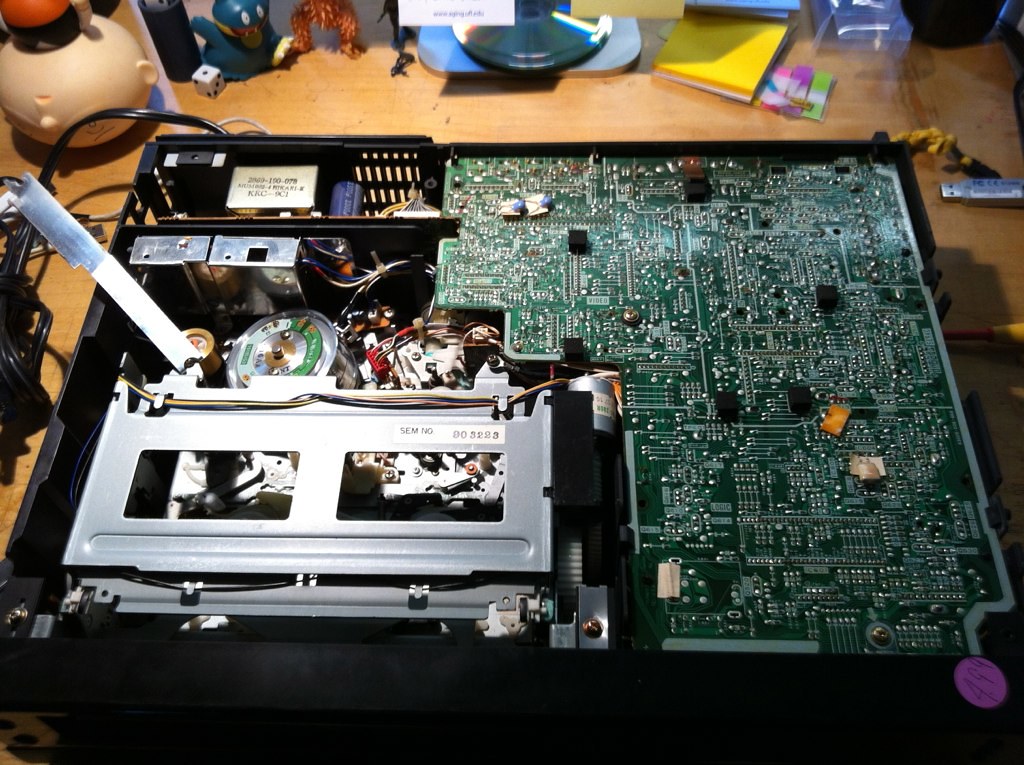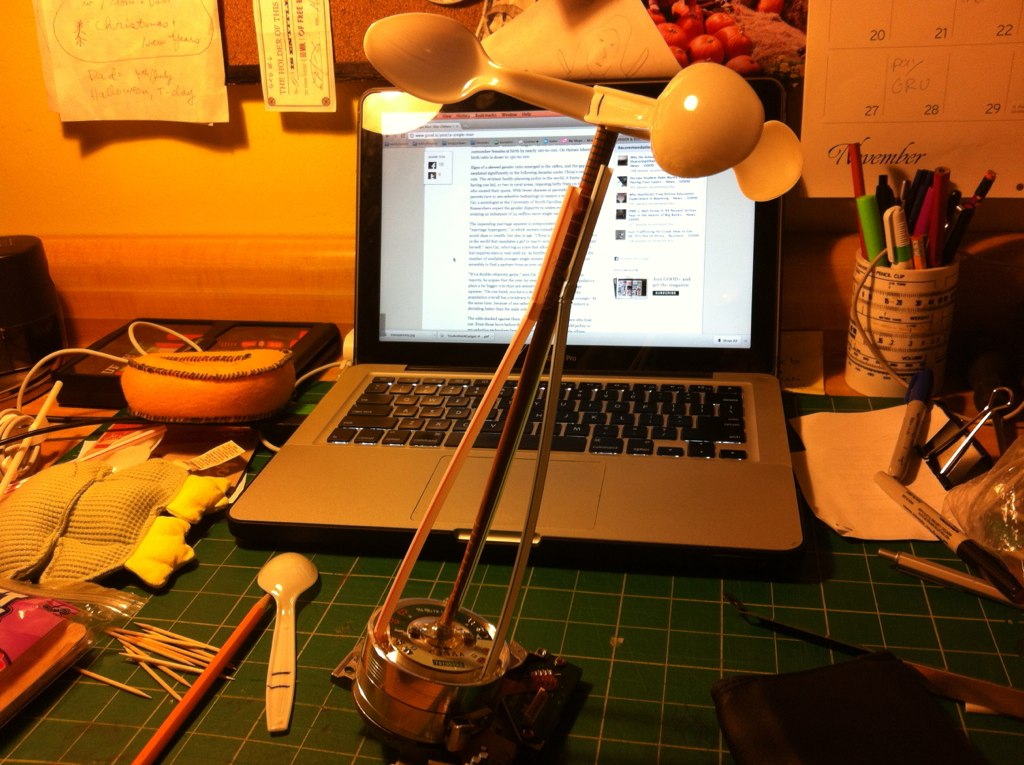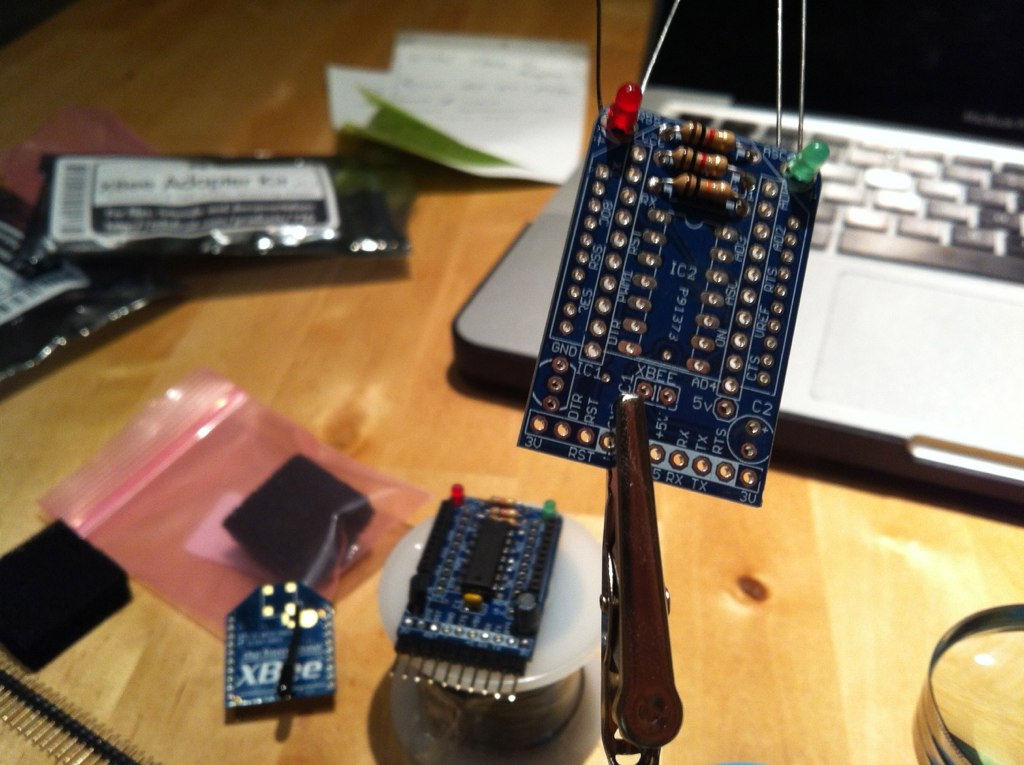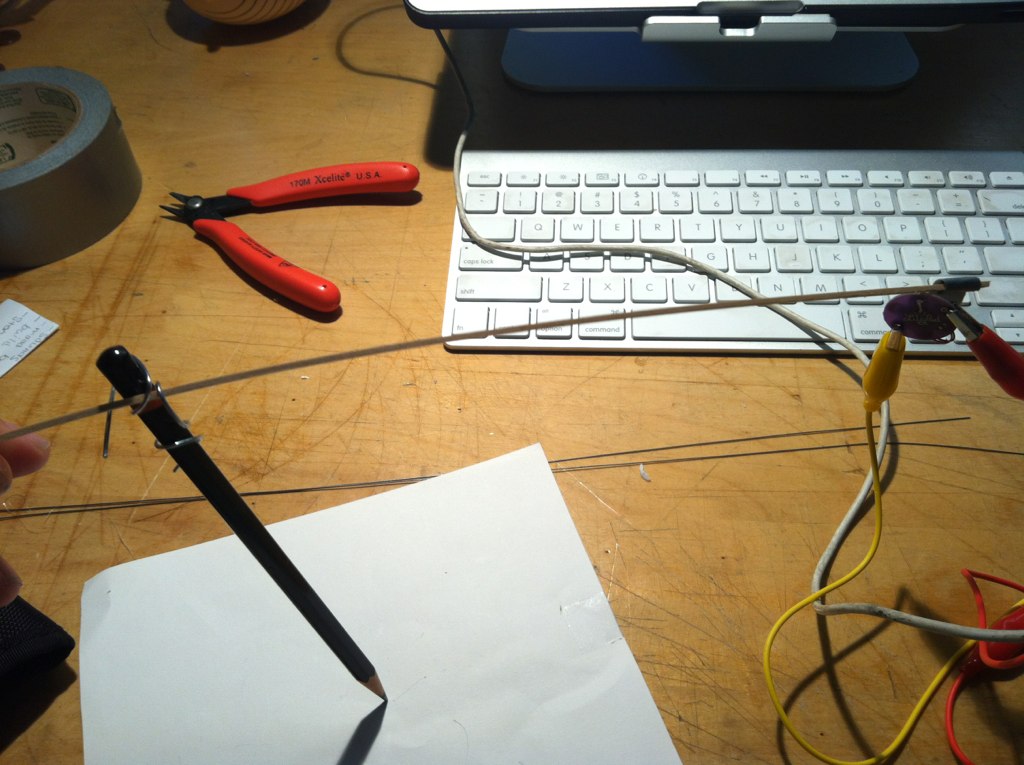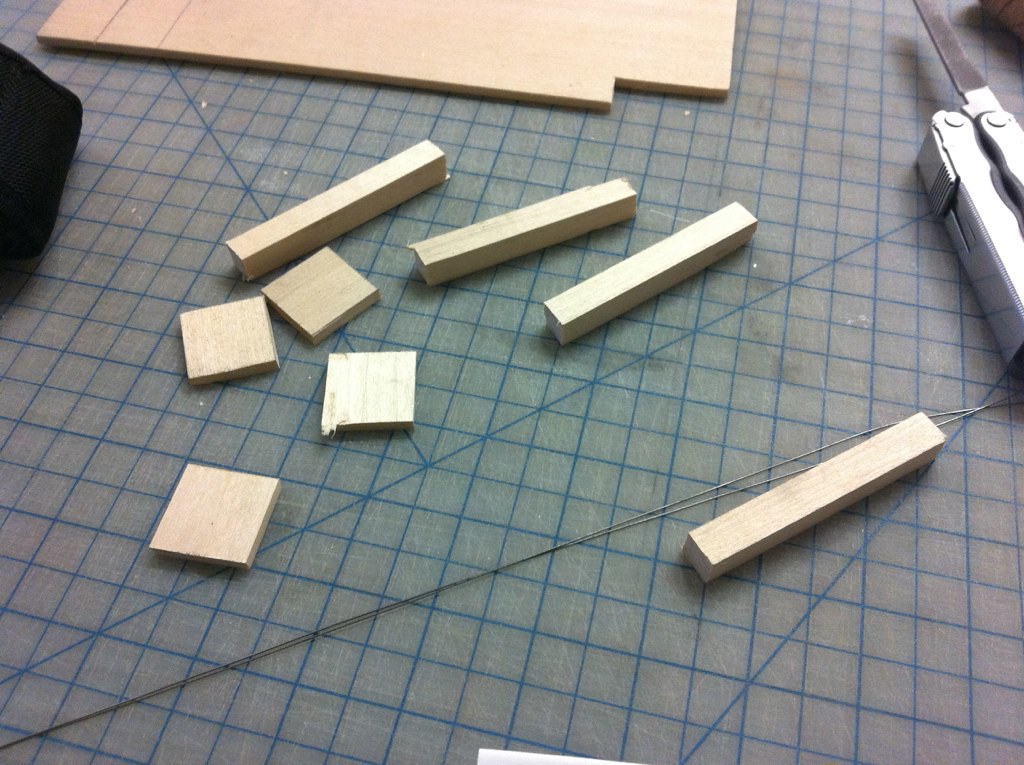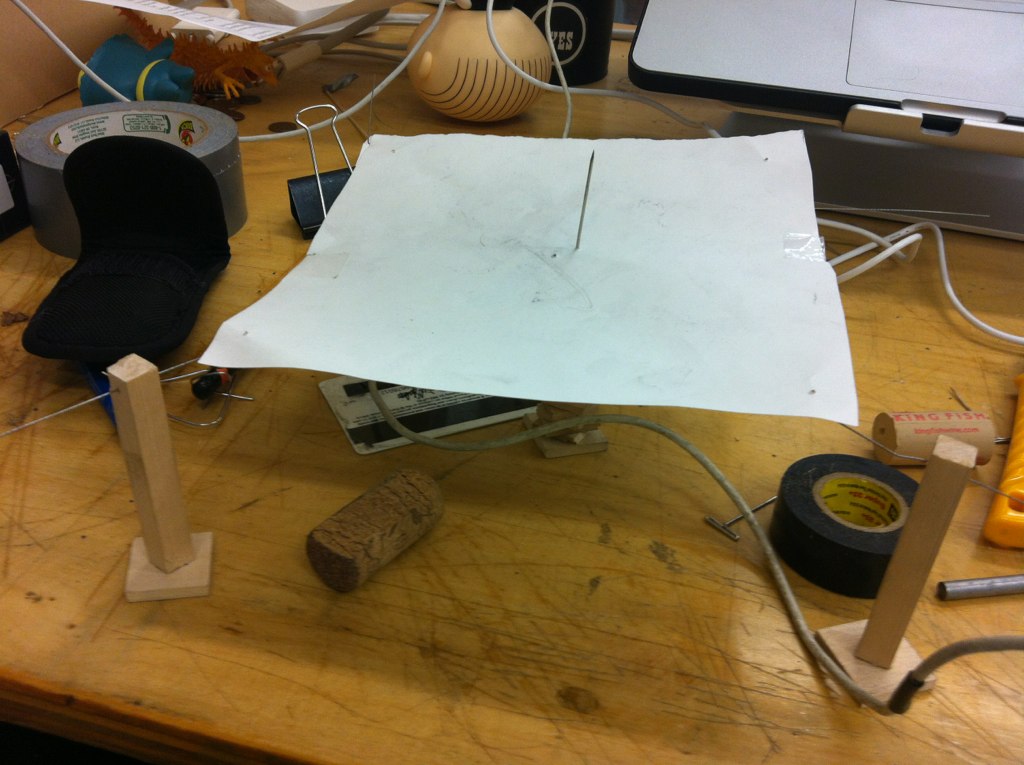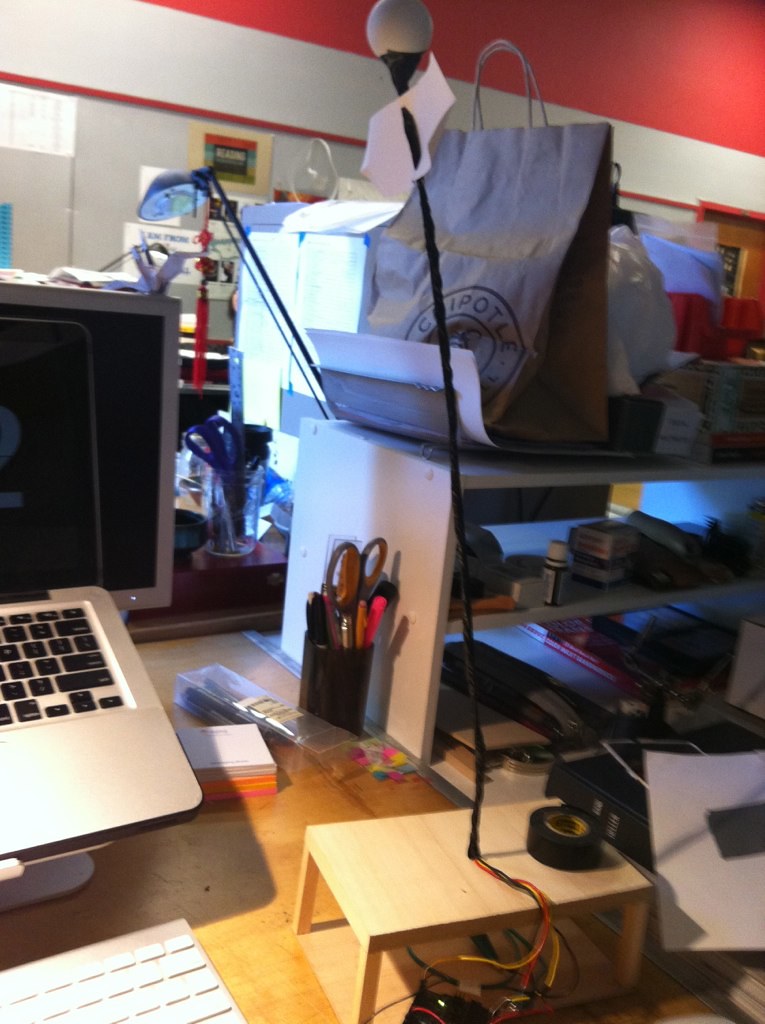But first I needed to create something to catch the wind.
I took apart a VCR to get to the tape head which had ball bearings. I thought that would help make a smooth anemometer.
Next I took some plastic spoons and attached them to a chopstick in an attempt to make something to catch the wind. I tried a few different combinations with the spoons and the three spoons at about 30* angles worked best. They spun well when I held it in my hand and blew on it but I had some trouble once I attached it to the VCR head.
Not only was it difficult to get it to stand up straight (despite trying to brace it with straws... which seemed like a good idea at the time) but the friction of the bearings was too much, even when using a box fan on it's highest setting to try to make it turn. I was back to the drawing board :(
One of the mice I go was newer and had a scroll wheel on it. I tested out the rotary encoder which made it work and the results seemed promising.
but once I attached the chopstick/spoon combo the same problem was there... too much friction to get a reading. I looked into reed switches as well, but none were available in the supplies room and I wouldn't be able to order them in time. Plus there was still the issue of how to deal with the friction of the device.
Meanwhile I built a couple of xbee adaptors since I wanted the piece to be wireless
but unfortunately had to put that aspect of it on the backburner so I would have enough time to figure out a way to make my project work.
As I was walking to lunch, frustrated that I couldn't get my anemometer to work I walked past some monkey grass and it hit me
I could get a reading from the wind if I used an accelerometer on some flimsy grass-like object.
First I tested the accelerometer with a motor.
In my search for a suitable alternative for the motor I came across a quote by the naturalist and author John Muir.
"The substance of the winds is too thin for human eyes, their written language is too difficult for human minds, and their spoken language mostly too faint for the ears."
This quote inspired me to look into a way for the accelerometer to trigger some drawing device.
Using a vibrating disk attached to a wire and pencil didn't work so well so I thought about what drawing really is, mark making.
I decided to make the paper vibrate with pencil shavings on it. I tried several different options for what to make vibrate but I liked my first idea the best.
Then I built the structures to house the accelerometer and the vibrating disk.
The disk was going to be attached to a middle support beam but I got better results when I taped it directly to the wires.
Left just on the support the paper would fall off.
I added pins.
I worked on the accelerometer structure as well.
The code was a simple analogread from the accelerometer with a constrained output to an analogwrite so that the output would accurately reflect what would happen when the sculpture caught some wind.
I couldn't get the xbees to work so I ended up using a box fan for my final project. Ultimately I was pleased with how the project went. I redid a few things after the crit like adding paper to the sculpture to catch the wind and modifying the paper on the vibrating disk with scores so that the movement of the pencil shavings would be different.
A lot of my stress and toil surrounding this project might have been resolved much quicker had I actually bought an anemometer and simply used it's output to power a fan, as was my original concept. But then I probably wouldn't have learned as much about the processes and numerous ways that one can track wind power and through that experience I feel that my final project became much more complex, at least conceptually.
